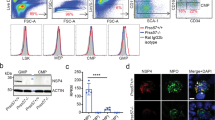Abstract.
Mast cells are strategically localized along the microvasculature in tissues in close contact with the external environment, such as the skin, lung and intestines. By releasing a multi-faceted spectrum of proinflammatory mediators, such as cytokines and chemokines, mast cells have the capacity to coordinate trafficking of leukocytes. Mast cells play a pathophysiological role in numerous inflammatory diseases as diverse as hypersensitivity reactions, ischemia/reperfusion injury and rheumatoid arthritis. On the other hand, mast cells act also as tissue sentinels and are critically involved in the host defensive response against microbial infection by stimulating neutrophil recruitment. Glucocorticoids are powerful agents frequently used in mast cell-dependent diseases, although the anti-inflammatory mechanisms of these compounds are not completely understood at present. In order to circumvent steroid-associated side-effects and develop more specific therapeutics, numerous studies have examined the mechanisms underlying glucocorticoid inhibition of mast cell-dependent neutrophil recruitment. Based on recent findings, it may be suggested that glucocorticoids selectively inhibit the expression and function of certain adhesion molecules and chemokines. This review summarizes current insights into the underlying mechanisms of mast cell-regulated tissue accumulation of neutrophils and the inhibitory effects of glucocorticoids.
Similar content being viewed by others
Abbreviations
- CD:
-
cluster of differenciation
- ENA:
-
epithelial-cell derived neutrophil activating peptide
- GCP:
-
granulocyte chemotactic protein
- GRO:
-
growth-related oncogene
- HCC:
-
hemofiltrate CC chemokine
- IL:
-
interleukin
- IP:
-
interferon-gamma inducible protein
- I-TAC:
-
IFN-inducible T cell alpha chemoattractant
- LEC:
-
liver-expressed chemokine
- LFA:
-
lymphocyte function-associated antigen
- LTC4:
-
leukotriene C4
- MDC:
-
macrophage-derived chemokine
- MIG:
-
monokine induced by interferon-gamma
- NAP:
-
neutrophil-activating protein
- PF:
-
platelet factor
- RANTES:
-
regulated on activation, normal T-cells expressed and secreted
- SDF:
-
stromal-derived factor
- SLC:
-
secondary lymphoid tissue chemokine
- TARC:
-
thymus and activation-regulated chemokine
- TECK:
-
thymus–expressed chemokine
- TNF:
-
tumor necrosis factor
Author information
Authors and Affiliations
Corresponding author
Additional information
Received 28 April 2004; returned for revision 24 June 2004; accepted by R. Pettipher 14 July 2004
Rights and permissions
About this article
Cite this article
Schramm, R., Thorlacius, H. Neutrophil recruitment in mast cell-dependent inflammation: inhibitory mechanisms of glucocorticoids. Inflamm. res. 53, 644–652 (2004). https://doi.org/10.1007/s00011-004-1307-8
Issue Date:
DOI: https://doi.org/10.1007/s00011-004-1307-8




